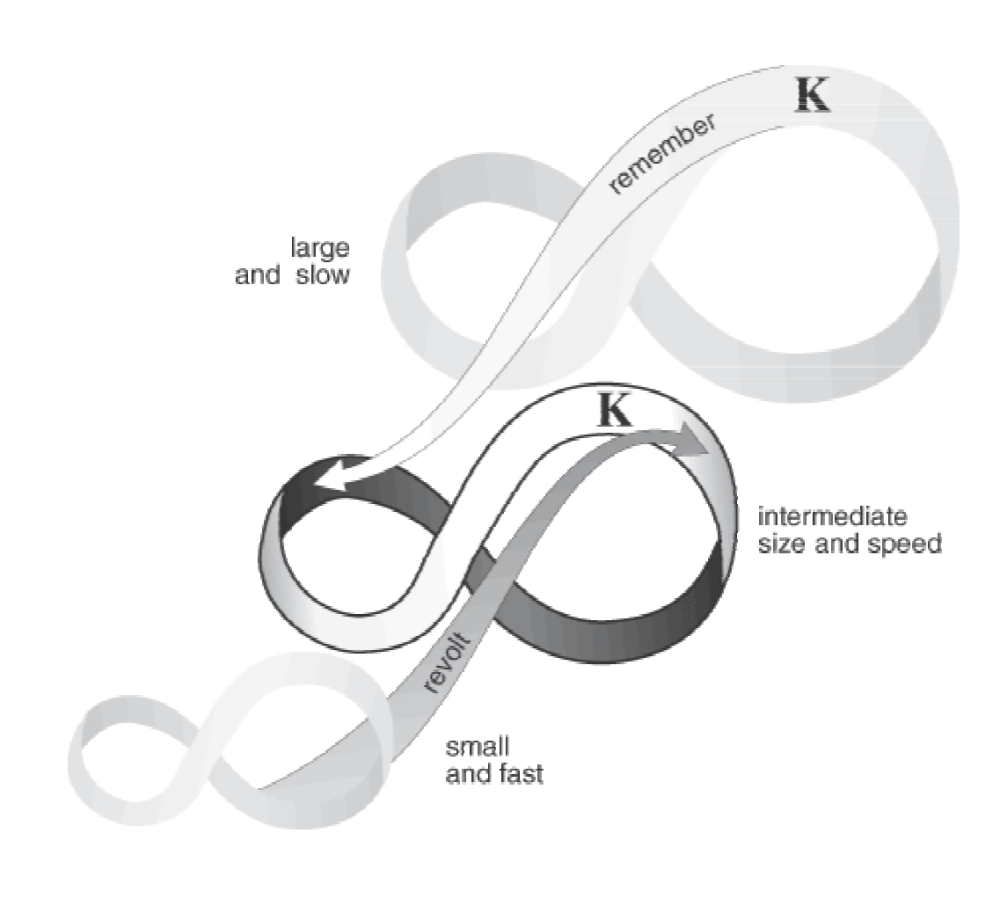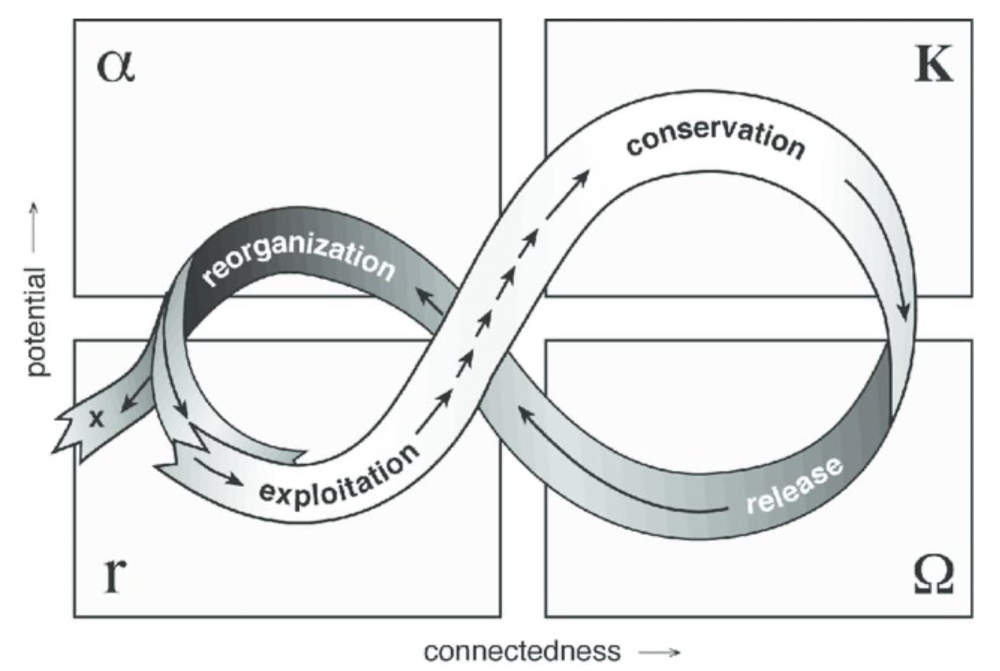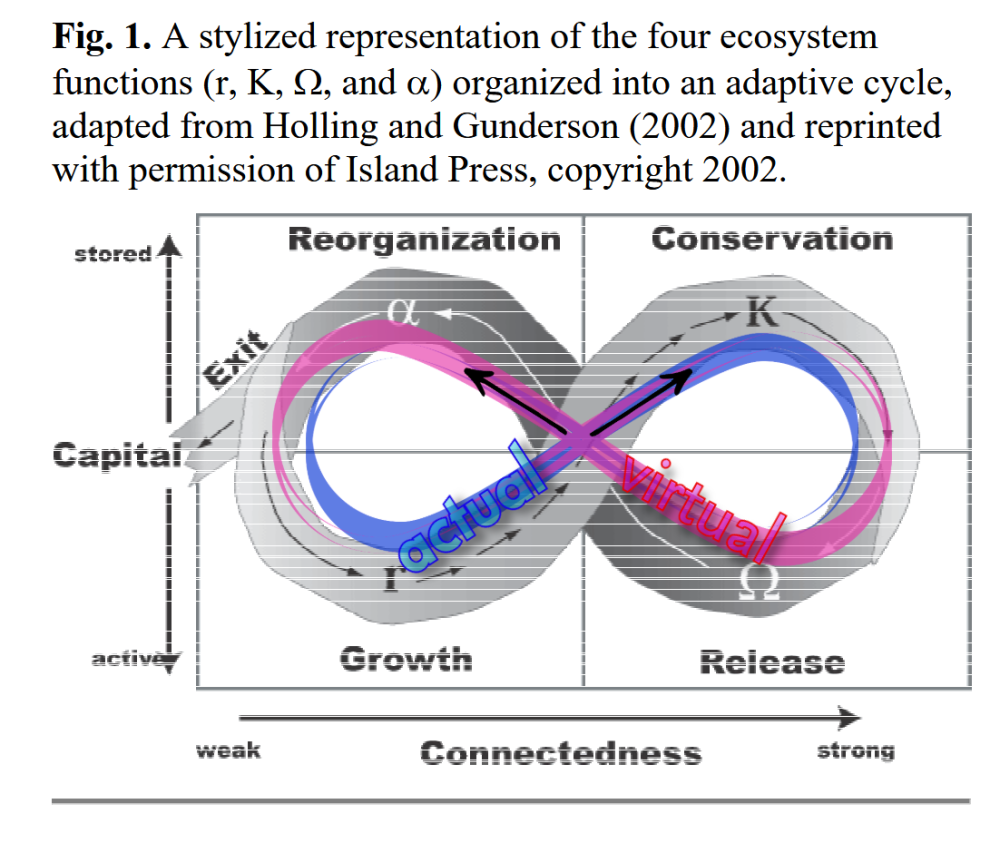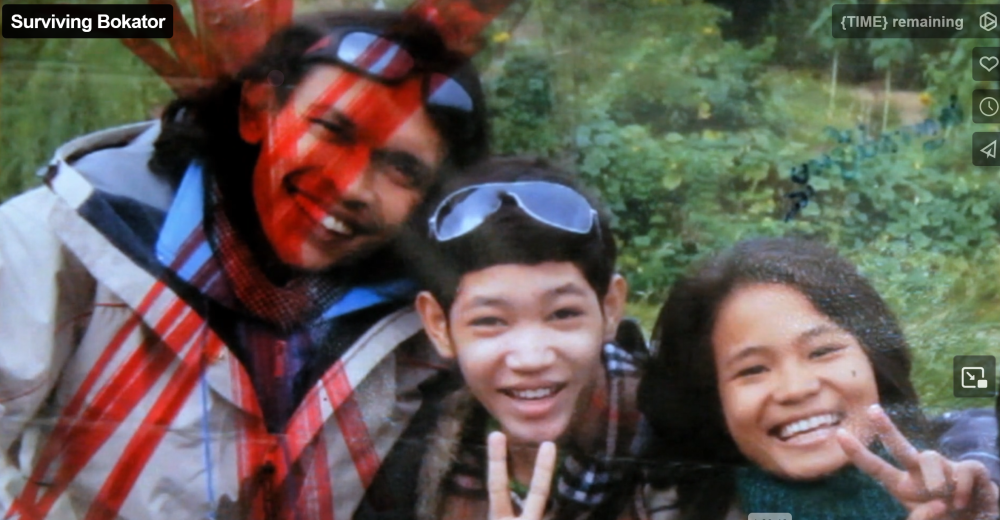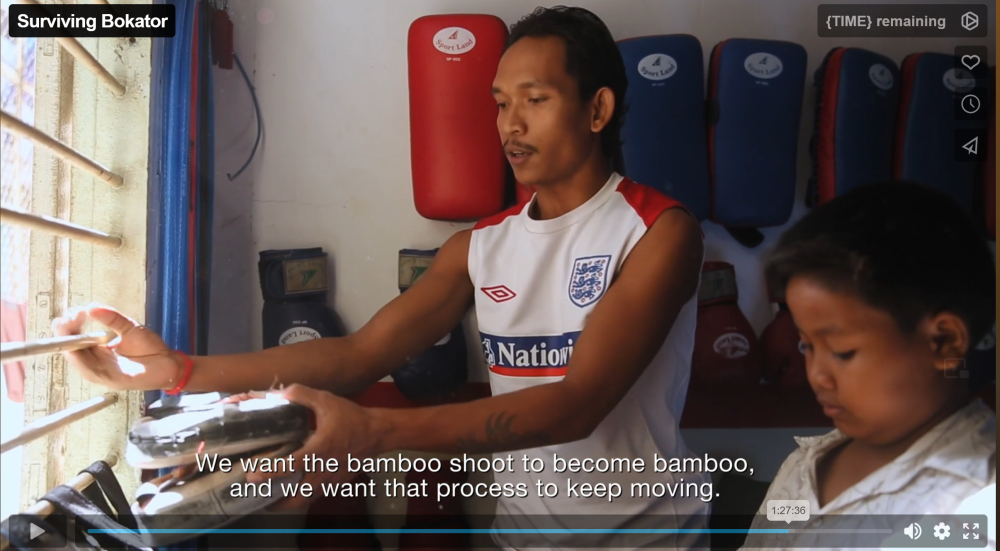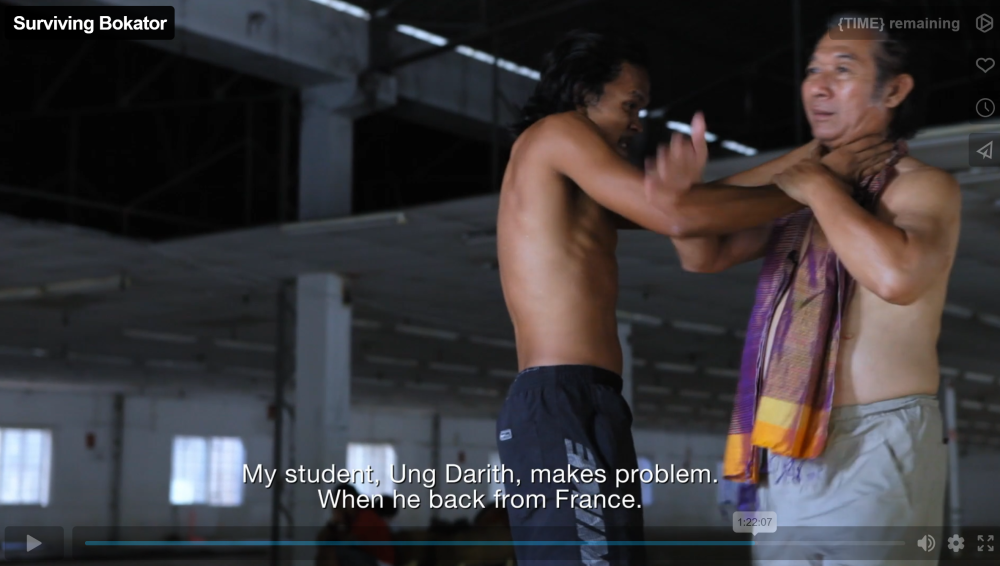All Activity
- Today
-
These: “speed”, “danger” “energy”, “fearlessness”, “aggression”, “action”, and “the punch and the slap.” are the numerated principles of Italian Futurist Marinetti used to describe the Futurist movement in 1909 in his manifesto, which came to influence rising Fascism in Italy. Oddly enough, these pretty much describe the commitments of "new" Muay Thai, as it seeks to upend its traditional foundations. This arguably is all part of a Modernist acceleration.
-
Gordon joined the community
-
namansharma joined the community
-
Some of my comments in reply to The Pretzel clinch position that is increasingly common in Muay Thai. You can see this discussion the comment section of Yodkhunpon's Fast, Trapping Anti-Clinch Reversal from Outside Position - (8 min, public) The proliferation of inside elbows in today's Muay Thai is part of the erosion of soundness. Against skilled opponents you really don't want to be approaching them and grabbing double wide as a habit. You are cleanly open. It's much more sound to regularly control the middle in principle if you are worried about inside attacks. Once you have the elbow from the inside part of that technique is leveraging it so doesn't get high (you can see that in the photo with Karuhat), and using your weight to steer. Additionally, if that elbow does get high this opens them up very easily to a quick pass under the arm to the edge and a very strong side control position if not just taking their back. A lot of the time you actually WANT that elbow high, and you even force it high (Sylvie does this pass a lot). But hey, I'm sure that people teach the pretzel now, its extremely common in Thailand among Thais. It just my view is that clinch is highly degraded in Thailand, among Thais, and not really as complex or technically sound as it once was in the Golden Age. Even fighters like Karuhat, who seldom clinched in his fights today are pretty profound clinchers, even decades removed from their fighting days. They just understood the grappling element at a higher level. A lot of the Muay Thai Library is about documenting the disappearing Golden Age techniques and principles, and this is one of those. and... (Kevin commenting) Yes, if I'm reading you right, I think the theory is in agreement with what you are saying. The point being, when you see habitually double outside position...this is born out of a gym with poor clinch training habits...it starts with poor inside control by one partner (high up on the bicep, near the shoulder, and not down by the elbow). This is just a weak inside position. Given that position in a partner it is perfectly reasonable to fold your arm(s) down over that over that arm to control the intside elbow, but the deeper point is that this produces in real terms bad habits between BOTH training partners, especially when two partners train together a lot as they often do in Thailand. The first partner shouldn't be automatically slapping their hands down at the shoulder, they should be controlling the frame on first move (generally), and the second partner shouldn't really just take an inferior position as a default response...the receving fighter honestly shouldn't be just giving up inside position on a default either. What happens in real life, is that two partners end up just "taking" these relatively poor positions, neither of which are fighting for inside control, for long periods of time, just to waste away chunks of training time, just so they can look like they are clinching - these are teen to young teen boys. Neither fighter is actually trying to control and dominate the frame in these instances, because it's tiring. In the Rambaa video too, he is not at the elbow, and honestly this isn't ideal (small inches or angles can made a big difference), but it is part of a swim he is teaching and constant fighting for inside position. This struggle over position and the frame is the essential part of clinch dominance. You take the outside position in order to GET back to the inside. What I'm speaking to is a kind of weakness in Thai clinch training over all, which involves kids learning how to burn hours NOT fighting for inside position. I'm not saying you should never braid your arm over, I'm speaking particularly to the lasting double outside pretzel, as a "default" start position. When I see Thai fighters in the ring default to this double outside position in fights the first thing I think is "This person doesn't really know how to clinch", and even some by reputation high level Thai clinch fighters do this a lot. The reason why I say this to myself isn't because they are making a technical mistake. It's that taking this position somewhat by habit tells me that when they clinch in the gym this is a common default between partners. It means that regularly BOTH partners are taking weaker positions repeatedly (there is no correction). It means that the training itself is not about the struggle over positional dominance. It's the signature of a lack of rigor, and kind of a baked in laziness. Clinch is actually a very fragile art, and bad habits can creep in quickly even in experienced fighters, and lack of clinch in training can erode even spectacular clinch fighters over a very short period of time. Honestly though, gyms now are no longer kaimuay in the general sense, and Thais have changing motivations for training. And the authority or rigor of a gym has shifted in how it is exercized. Some of the study of traditional Muay Thai is about tracing these changes in training (and even socio-economics) and how it is altering, or even eroding, techniques. I do also think that there is a tendency to just feel that if Thais are doing something a lot this is automatically high level, especially in something like clinch which has been their specialty, but often there is degradation in technique as training changes, and with clinch being less and less emphasized in Thailand rings there is likely to be even further erosion of Thai clinch habits and techniques. --- I was really struck when I watch Karuhat (one of the least clinch oriented fighters of the Golden Age) clinch up with Samson (one of the great clinch fighters of the Golden Age)...I believe its in the most recent Karuhat MTL session. Karuhat completely neutralized Samson in the clinch...through inside control. It was kind of amazing to see. He just was technically superior. Small things matter. Samson's relentless swims and Muay Khao assault maybe wins the day given enough time, Samson said as much, but on grab or just after Karuhat won the position, because he is VERY sound. Maybe he had to be sound like that because he was small and fought up against strong clinch fighters, I don't know, but it was and is a little startling. It opened my eyes even more to these kinds of principles that are buried in training habits. A lot of Thai fighters on entry do not take dominant, or fight for dominant position these days. They often take weak positions...and THEN fight for dominance...or not, sometimes they just take neutral positions and wait for trips, or attempt knees. (That's where Yodkhunpon's reversal is helpful, its a move like that from a weak position.) --- sorry to on about this, but your comments allowed me room to go at length on something I find really intersting, and in terms of clinch success really imporant. To share a little about our process and thinking: Sylvie is an amazing clinch fighter, perhaps the best clinch female clinch fighter in Muay Thai history, if only in terms of the size of fighters she's been able to beat almost entirely through Muay Khao clinch styles, but we are constantly aware that training conditions (wrong sized partners, lack of correction) can produce serious degradation of techniques, and honestly bad habits. And one of those bad habits can be just flopping down over in a pretzel. As a smaller, physically weaker training partner (Sylvie for years has trained against partners with 10 kg or more on her) this becomes really easy to become accustom to doing, because you are just trying to neutralize greater strength and size, like you say, control that elbow from the outside, but this leads to some serious problems in actual fights. It develops a habit of taking outside control and resting in it, or kind of "losing" the initial grab because you are used to giving up inside position vs bigger training partners. This has consequences in fights where refs are making quick clinch breaks (sometimes because of the promotion, sometimes because of the ref). If you are taking outside, weaker positions on entry, this means you spend the first movements just trying to improve your position. By the time you have struggled to swim inside and frame up the ref is breaking the clinch. This is a huge problem in todays Muay Thai if you are Muay Khao fighter. You have to get to the dominant position quickly because they won't give you time to work the position and develop it. In clinch training you have long stretches, 20 minutes, 30 minutes, 45 minutes...but in a fight you have 3-7 seconds to get to a dominant position before the ref comes. If you aren't used to taking a dominant position quickly, and you rely on clinch as a major part of your game, you lose. You simply will lose the fight. Clinch training for you has to be about fighting for the inside more or less continually, and winning inside position on entry, so you can keep the ref off of you, and part of that is making sure that you take the right angles on grab, you get at and dig in at that elbow.
- Yesterday
-
Hamasaki Haruko changed their profile photo
-
Sato Moriko changed their profile photo
-
Hamasaki Haruko joined the community
-
Sato Moriko joined the community
- Last week
-
olgabrian joined the community
-
Here is something else I wrote that could help with understanding the notion of authenticity in Thailand: How Traditional Muay Thai is Taught Much Differently Than in the West There is a bit of Philosophy in this, it may not be everyone's cup of tea. Posting these ideas here if only for diversity in the way Thailand's Muay Thai can be discussed and appreciated. Traditional Muay Thai (as practiced in Thai camps, kaimuay) is probably best understood as developed through a horizontal, communal process rather than top-down instruction. Instead of rigidly copying an ideal form, developing fighters sync with the group — a kind of shared rhythm or “group mimesis”— which allows for individual expression within collective coherence. Everyone’s technique (like a kick) is different but still resonates with the camp's shared feeling or aesthetic, a pulling toward a social gravity like synchronizing metronomes (video linked below). This more organic, culturally embedded process contrasts with many Western pedagogies, where fighters often perform near-identical techniques due to top-down coach correction, emphasizing biomechanical uniformity. In contrast, Thai camps foster diverse, but affectively aligned, and culturally embedded technical expression—a development perhaps more akin to inner-city basketball or favela soccer, where skills develop in peer-based, play-oriented ecosystems. To be sure kaimuay are very hierarchized status environments, something visiting Westerners may not notice, but a peer and play based dynamic is essential. The nature of this more organic quality poses resistance to the exportation of traditional techniques into abstracted, idealized biomechanical forms governed by a correcting authority. (In Philosophy this critique is mirrored by Gilles Deleuze's rejection of Platonism—opposing the notion of a perfect form with imperfect copies.) Instead, trad kaimuay Muay Thai preserves a virtual/actual dynamic where technique emerges from shared affects and a communal environment, not a replication of a form. Karuhat’s unique kick that we filmed in slow motion is a good case study—its essence can’t be reproduced by biomechanical mimicry alone, as it developed through years of communal, affective practice, as well as extensive development in rings. Our video documentation may transmit aspects of it, but its soul lies in communal resonance, not biomechanical approximation. So, the only way into this kick is through feeling. you can click through to the notes on this, which includes some of the video reference. These points were made through ongoing conversations I'm having with a biologist/philosopher who studies biology through Deleuze and Simondon.
-
Bookmarking this here. I've been working a Philosophical/Metaphysical theory which helps explain why Thailand's traditional Muay Thai is so difficult to export, especially when biomechanically traced and approximated, in individual techniques. The Philosopher Simondon's theory of concretization, read as elegance, when describing the development of technological objects (and I do consider Muay Thai as a fighting art a "technology", definition coming) and their concretization as they both develop internal coherence and an integration within their milieus, a worthy framework for such a theory. from: “Concretizing Simondon and Constructivism: A Recursive Contribution to the Theory of Concretization,”.
-
In making this graphic I place the silhouette of a boxer in the middle zone to illustrate how Boxing's fully developed "in pocket" fighting relates to the other zones of trad Muay Thai (and was integrated into it through 4 decades of influence from the 1950s-1980s), but the graphic is much more about thinking about Muay Thai in terms of these three zones, and how not only length of weapon, but also techniques of defense shape control over these 3 zones. In its contemporary trad versions Muay Thai has someone split into exaggerations, Muay Femeu vs Muay Khao, leaving the middle zone much less developed. I believe this is in part due to Boxing's eroding influence upon trad Muay Thai. (Importantly, "Boxing" here is not represented by combo training, which largely consists in biting down and throwing strikes that have been memorized. Boxing is a very defensive, position oriented high-level art which is about controlling middle zone...not just chopping through it, as combo fighting would have it.) Because the higher level control over the middle Blue Zone has eroded, more and more Thai fighters either defend with distance in a femeu manner, or crash through into the close proximity Red Zone, where stand up grappling can take over. This is not to say that there is no Blue Zone skills of entry, defense and attack, its just that they have eroded, there are far less "eyes" in the Blue Zone now. In the Golden Age fighters, even fighters that really favored either extreme of these zones, were also quite capable in the Blue Zone, in both defense and offense, which made the fights between shifting zones complex and compelling. Now, instead, combo-ing is filling in the Blue Zone, really antithetical to the higher level of trad Muay Thai which was founded on defense, vision and improvisational attack. When watching a trad fight now, but really any fight, I mostly watch how fighters handle these three zones, which is to say fights are about the control of space to me. The graphic isn't meant to be exhaustive of course, but just to draw attention to these zones, and thinking about how the borders between them are managed. The emphasis though is on defense in these zones, because defense is a scoring priority in trad Muay Thai (as much as we love to look at the striking), in part because defense is much more difficult to develop, and often reflects the much more complete fighter. Keep in mind, clinch in Muay Thai is heavily a defensive sub-art. What is beautiful about Muay Thai, especially in its Golden Age versions, but also elsewhere, is that it is about the control of all 3 Zones, especially with a defensive emphasis. We look at the striking, for which trad Muay Thai is renown, but the striking is made possible because paths are already conditioned by defensive shaping of the zone, and the borders of the zone. It's a high art of control, and therefore dominance, and not of aggression, though aggression at select times plays a role. I should also add, because of the nature of the 3 Zones how you move through zones becomes really important. This means your tempo, your footwork, and your defensive composition all have a hidden impact on one's success in a fight...and it means that if you can prevent your opponent from moving through the zones with control - one reason why the teep is so powerful in trad Muay Thai - this can overcome all kinds of other disadvantages you might have. Zone transition is at times more important than you "techniques" even though lots of non-Thais train "techniques" endlessly, trying to perfect them. Very good padwork, in the Thai style, is actually about transitioning between zones, managing zones in terms of control, and attack. It's not about the strikes, though it seems to be. This is why it is sometimes hard for non-Thais to achieve as padholders what the best Thais are doing. Because Thai padmen are often ex-fighters who have absorbed sensitivity to the 3 zones, they instinctively are working training fighters through each of these zones, its within the nature of their footwork, even as padmen. When non-Thais approximate Thai padwork everyone's eyes on the strikes. It should be on the feet, and on the spatial changes...when the padman is engaged. This is a kind of internal secret to some of Thai style padholding. Because zones matter, where you "set up" can also be extremely important and have a hidden impact on the shape of a fight. Are you setting up "in a zone" (that you prefer)? Are you setting up on the edge of a zone that your opponent does not prefer? Watching where a fighter sets up, at what distance, and even seeing how it changes over the course of a fight can be an barometer of how the fight may go.
-
maxwinjackpot joined the community
-
One of the most interesting mysteries of the evolution of Thai clinch is how stadium Muay Thai in not more than 10 years after the legalization of trips and various sweeps (early 2000s) suddenly flourished with a complete art form of these techniques, when in fact none of them were prevalent in the decades before (the Golden Age), so much so they became signature of Thailand Muay Thai's unparalleled fighting style. The only answer to "why" or "how" is that these movements were already implicit, were already within the "adjacent possibles" of highly developed Golden Age Muay Thai, because Thailand's Muay Thai operated at such a deep level of attunement to balance and timing, and thus it was only a short path between almost no trips and sweeps to suddenly dominant tripping and sweeping...in a few short years.
-
What many do not appreciate is that much of Thailand's traditional Muay Thai is really a Shield and Sword style of fighting, because of its inherent priority of defense. Offense largely is built off of the dexterous use of "shield". Entertainment Muay Thai is essentially turning to Muay Thai's Shield and Sword and saying: "Hey, fight without a Shield!"...but still make it "Muay Thai". You can't really. It's Shield and Sword.
-
Reading now on the idea that "technique", well, much more the focus on the machine of artistic development and expression, the focus on the craft of making, can be understood as a prelude to contemplation. Poet-engineer, poet-warrior, understood through German Romanticism, Novalis and Simondon. This is really the discovery of the meaning of aesthetic. Just beginning the essay though. (I suspect this is much of what Sylvie has been doing, and is the proper perspective to take toward "technique" which can become quite fetishized and worse, commodified, biomechanized in fighting. PDF posted below if anyone wants to read the article. Simondon_and_Novalis_Notes_for_a_Romanti.pdf
-
This story is about mastering energy, and focus on the few techniques that will bring it forward. The Unexpected. Sylvie put together her commentary on Fight 285. The fight is a beautiful example of two huge things that determine a fair number of fights: Energy and technique. One of the things that had a shaping impact on this fight was that when we travel like this, Ronin style, just quite far into rings that are on the outer edge of Thailand, far from the tourism Muay Thai, there is a wonderful kind of freedom from the politics of expectation, and by that I mean the sort of self-judgement that a fighter can bring in fear of disappointing others. In this fight it felt like we were traveling all the way to the Moon, ready to fight all renegade style (Sylvie in fact was booked to fight a Boxing fight back in Bangkok the next day, we would have to get in the car and drive all night to just make the Boxing fight with a few hours to spare, so just a tremendous old style adventure). But Yodkhunpon, who had never been to any of Sylvie's fights before, but had sparred with her pretty much daily for 5+ years, just shows up at the venue as we are ready to lay our mat down, unannounced. He's perfect and wonderful, but it was a huge deflation in that fight freedom and mission, with almost a depressive effect, at least as much as I could feel. It's like you went and climbed a far off mountain nobody climbs, and your best buddy is sitting there at the summit "Hey!" - totally unexpected, and even though great, completely antithetical to what you had mentally prepared for. We were ready for a marathon run of two fights, the greatest challenge of which wasn't the fights themselves - it was the tons and tons of driving, and lots of exhaustion - but suddenly it was a Pop Quiz on a single fight late in the night - Yodkhunpon had no idea Sylvie was fighting back in Bangkok the next afternoon. She wasn't running a 10K, she was running an Ultra that nobody knew about. The mission was: drive 8 hours into the night, sit several of hours on a mat, fight, drive 8 hours through the night back to Bangkok and get to a hotel maybe around 10 am, fight the Boxing fight around 2 pm, two fights in 26 hours 1000+ km of driving (it was an off coincidence that she had been double booked, and decided to honor it). She can fight like that back to back because she carries very little mental baggage with her when she does. It's just like a machine, a runner that gets into her cadence. She just puts her head down and fights free. So, it was a very difficult mental test record scratch. Suddenly the mind is not on the fight, or really more the long term mission, its on this unexpected change, a new focus. I could feel her deflation. I'm very sure that Yodkhunpon was just offering huge support, because fighting without entourage is a definite cultural no-no in Thailand, nobody does it, and it signals only weakness. But, this is the beauty of fighting so much. You discover these mental challenges that arise out of nothing. (Yodkhunpon also showed up unexpected on the mat laydown 2 fights later in Buriram at Fight 287, to every different effect, as Sylvie was already fighting under Therdkiat and was geared for that kind of relation.) Secondly, Sylvie's outside grabs just killed any momentum and intensity should could muster (fighting that unexpected deflation). Outside position means that you have to work immediately to try and get to a positive position, so you are never imposing yourself upon entry. This means running up hill to start every engagement in the clinch, a serious energy/momentum drain. The combination of the two of these, the emotional energy, the weaker technical entries (and the skill of the opponent) just made this a very steep grade to climb. Add in the cuts (which swung the score) and its an near impossible elevation. And in fact Sylvie's grit and experience gave her a great performance under those conditions. She pulled enough together that if there wasn't the cuts and the score swing she still was right there. On the other hand the cuts of course were a technical focus and achievement by her opponent, lifting her out of a battle into a open lane. So props. I do think that a different mindset, without the unexpected reversal of the mental landscape, would have made the difference here. Sylvie's an extremely experienced fighter who can ride through pretty much anything unexpected, and she rode through this, but it was an incredibly unusual event, two very rare things coming together. Your long time legend sparring partner shows up to corner you 500 km from where you expect he is, no word that's he's coming, for the first time ever appearing at a fight of yours...just as you are attempting a fight ultra that needs to be extremely streamlined emotionally. She did kind of fantastic in this equation, but took 7 stitches for it. But, the main focus of my commentary here more is the way that individual techniques and broad scale "energy" shapes connect up together to determine fights. The energy and tempo of a fighter can be undermined or amplified by small technical things. Inside grabs can become accelerants just when you need them to lift you. I also thought that Sylvie fought great in the 5th round. She minimized it because of fight context and that she had refused to chase the win, but she actually was out timing a timing fighter, and seemed to find some special internal rhythms that got her clicking...not for this fight, but for layers of future fights, something to tap into. Sometimes in a fight - especially in a career of hundreds of fights - where you have to explore a space, even if it doesn't serve victory just then and there. There is no replicating the ring, even in sparring.
-
ChristineLafond joined the community
-
A Battle of Affects I've argued that the highly Westernized (Globalized) affect expression in ONE and other Entertainment Muay Thai, typified in the Scream face you'll see in fight posters (which sometimes ironically looks like a yawn) and in post fight celebration, expressing aggro values that work against the traditional affects of Thailand's trad Muay Thai, a fighting art that comes out of Buddhistic culture largely organized around self-control...(that's a mouthful!) is attempting to invert Muay Thai's relationship to violence itself. It is interesting that spreading in the trad circuit is this mindfulness/meditative post-fight victory pose, an example of which is here, the young fighter with his trainer. This is no small thing because arguably culture is made up of prescriptions of "how you should feel", largely expressed in idealized body language and facial expression. When you change that prescription, in fact inverting, you are challenging the main messages of culture itself. One of the gifts of Thailand's traditional Muay Thai, I have discussed, is that it provides a different affectual understanding of violence itself, which then cashes out in simply more effective fighting in the ring. Something of a gift to a world that is more and more oriented toward rage and outrage.
-
This was all in answer to someone asking if learning Boxing would improve one's Muay Thai, my thoughts on that: Thailand's traditional Muay Thai was developed through a century-long dialogue with Western boxing - first through the influence of the British in the early 20th century, then the influence of American boxing in the mid-century. A great deal of this simply never "got into" Westernized versions of Muay Thai, mostly because it was exporting specific techniques, and was focused on all the ways Muay Thai was NOT like boxing. It has, historically, a lot of boxing reference and influence, at least in strains. This if further complicated by the fact that Boxing's influence on TODAY's Muay Thai in Thailand has dramatically dropped off. Arguably the deep fall in skill level (eyes, timing, defense, improvisation, variety of techniques, etc) across the board in Muay Thai among Thais can in part be laid at the loss of this past relationship. So yes, I would say training and maybe even more importantly fighting in Boxing probably gets you closer to the highest levels of Thailand's Muay Thai as it was in the its past (for instance the Golden Age 1980s-1990s). Aside from countless insight into technical aspects of the sport, footwork, a feeling for the control of distance and continuity, just being able to become comfortable in the pocket and defend yourself there will keep you from having to defend yourself by taking distance, a common "hack" of defense itself. But also..."training combos" isn't really what I would mean by "Boxing"...something some people mistake. It's almost the opposite of Boxing proper. [edit in for context: a look at the two top Muay Thai fighters in Thailand in the 1930s who also were top boxers in the SEA boxing circuit: What Was Early Modern Muay Thai Like? New Film Evidence (1936): Samarn Dilokvilas vs Somphong Vejasidh
-
The Deskilling of Muay Thai Through Combo-Fighting Discussing again the deskilling of Muay Thai in the ONE promotion (and to a lessor degree, other Entertainment forms of Muay Thai): To be quite broad about it ONE is just bite-down combo fighting turned into a sport so larger bodied, less-skilled farang can win endless pocket trading (which is seriously up regulated by bonuses and hidden penalties), so the (new, invented) sport can be promoted to non-Thais. It has nothing to do with the history of Muay Thai. It has to do with trying to create a product that will sell through Knockout highlights on Instagram. It also has almost nothing to do with Boxing. The impression it does is just the rather vast conflation thinking "combos" = Boxing. It, in my opinion, is contributing to the accelerated deskilling of the art and sport, rather than introducing important new skills, or returning it to past sophistication. Boxing is NOT "combos". 3 Zones of Fighting Here is a graphic to help explain: Over-simplistically there are 3 Zones of Fighting: ONE has effectively removed the importance of 2 of the 3 zones (because they take the most skill development, and Thais have been much better at those 2 down regulated zones). This is a deskilling of the sport: And, in the zone that remains (Zone 2), by removing defensive distance taking (the Thai emphasis on retreat and counter-fighting, and clinch, the traditional counter to a hands-heavy striker) they have made Zone 2 a haven for bite-down combo fighting (and NOT Boxing proper). That is to say, you can succeed by combo-ing through this zone, especially if you are larger bodied. On the other hand, if you look at the top graphic with all Three Zones, you can see how Boxing proficiency connects up, or fills in the high level development of zones 1 and 2 in Muay Thai. When all three Zones are in play bite-down comboing through the pocket doesn't actually do this, because it lacks the timing, vision and control over position that Muay Thai deploys in Zones 1 and 2. Boxing, on the other hand, because its so highly developed as a mid-distance art developed over centuries really, like Muay Thai, adds great complexity to the management of the 3 zones. A Historical Example: If you want to see what combo-ing does against a 3 Zone fighter the classic example would be Ramon Dekkers vs the 19 year old Sakmongkol: Sakmongkol simply refused to trade in Zone 2 and completely controlled Dekkers. ONE is basically the complete inversion of the Dekkers vs Sakmongkol fight. It removes Zones 1 & 3, and ostensibly would have forced Sakmongkol to trade with Dekkers, if we reimagine it. Eventually Sakmongkol, if he was forced to trade would have probably gotten caught...but not because Dekkers was a high level "boxer". It's because he combos through Zone 2, and the traditional control of that kind of fighter is dominating Zones 1 and 3. This is why Dekkers struggled when fighting Thais in Thailand, despite usually having a pronounced weight advantage. ONE is basically a "reversal" of the imagined injustice Dekkers losing to Sakmongkol and so many other Thais, changing all the rules to down regulate everything the Thais did better than anyone else in the world. But, this has nothing really to do with Boxing. Thailand was plentiful with Muay Thai fighters who were better actual Boxers than Ramon Dekkers. It has to do with the role of combo-fighting. asked to "define Boxing" (ie, its not "combo fighting): It's pretty hard to define a sport or art in a few sentences - or even paragraphs! - but what I would say is that Boxing has always been a sort of parallel in principle to Thailand's "Muay Thai", if you could somehow extract all the Boxing influence (which you can't). This is to say that "Muay Thai" excels at controlling the fighting space that lies outside of the boxing "pocket", through timing, the capacities of strikes to relate to each other at that increased distance (improvisationally), and very importantly, through defense. Boxing (abstracted) compliments this with a priority over the control of the space of the pocket, through the same. And, Muay Thai clinch then takes back over at the closest proximity, as a stand up grappling art (though Boxing too has its own lineages of very close-pressed fighting and even grappling). Training bite-down combos is really the opposite of all of this. It's just firing of memorized movement patterns and using them to blast or chop through the fight space. Combo fighting is not about controlling space at all, but rather dealing with the fact that you can't control it.
- Earlier
-
It is also notable that in this theory "colonization" occurs (expansion into vacated possibilities) as "reorganization" moves into "growth". This matches up somewhat with the colonization of Muay Thai by farang forces (including ONE and farang-focused Soft Power, an includes farang style gyms, and farang style training methods, farang fight promotion, etc), after a relative "collapse" of Muay Thai (release) through COVID lockdowns (and accusations). The "preservation" dimension, the recovery of past capacities, perceptions and know-hows, would occur through slower time scale adaptive cycles in this theory, because adaptive cycles are always nested.
-
Just a placeholding footnote here. I've been studying Panarchy Resilience Theory (one of the better articles attached) "Resilience of Past Landscapes: Resilience Theory, Society, and the Longue Durée" Author(s): Charles L. Redman and Ann P. Kinzig Stable URL: https://www.jstor.org/stable/26271922 Resilience of Past Landscapes - Resilience Theory, Society, and the Longue Durée.pdf ...a theory first developed in the study and preservation of ecological systems, and then extended to archeology's study of the preservation and collapse of civilizations, in an attempt to formulate a stronger theoretically concept of the preservation (or just stabilization) of Thailand's Muay Thai. It argues that adaptive systems move in 4 phases, named here below: I've elaborated them overlaying other amenable philosophical terms and concepts. The aim is to build a concept in which conservation is only a phase, part in a series of adaptive responses, including phases of collapse.
-
To the above I would add, this is the enormous difference between transmitting the form of the ring sport, that is the living practices of (actual) training and (actual) fighting, including so much of its embedded social context...and simply trying to transmit its "techniques", as if a dead script of a forgotten language. The more we move towards the transmission of "techniques", the more we are heading towards the ossification (and likely ideologically, and unrealistically imbued "construction") of an art. Not "techniques".
-
Watched Surviving Bokator: A story of the attempt to preserve Cambodian Bokator, decimated by the Khmer Rouge genocide. Fascinating to see the generational challenge as the "Grand Master" (who had granted himself the status of "Gold" Grand Master having mastered "10,000 techniques") experienced the peel off of his young students who saw the future of the art with training foreigners. What is so striking is how fragmented and strained the "dignity" of the art is, hanging on the threads of only a few lineages, where recognition and opportunity arrives in only small islands of hope. When an art is NOT a living ring sport, when techniques become somewhat holy, somewhat calling-back re-enactments rather than living answers to resistant fighting, it puts the question of transmission into deep social conflict. And, throughout, quietly, you can feel the ideological component of a struggle against Thailand's Muay Thai as the Master often nonchalantly (and fairly unrealistically) defeats versions of neck grabbing, saying at one point "Why lose two hands?" (if I remember). I feel somewhat saddened to see a fighting art caricatured in this way, struggling for recognition but caught up in very real National identities, especially in a culture that went through a horrific genocide that sought to erase its past. I don't really want to review the film, other than to say that it's best moments were in the countryside where the rural teachers were, and with the kids, the students, idealistically and passionately committing themselves to the art. And...in a melancholy way, the revelation of the Grand Master's psychology, seeking to justify his life before a dead father who rejected the art. I wanted to learn something about Preservation itself, since we are always engaged with this, not only from how its is being done in other circumstances, but also to see how a film works to preserve. I can only say that it is a blessing that Thailand's Muay Thai is so very far from this state of fragmentation and forgetting...though understanding that Bokator is much more akin to perhaps Thailand's Muay Boran codifications.
-
This basketball commentary can EASILY be a primary insight into what is wrong with a lot of Muay Thai, and what set out the great Golden Age fighters of Thailand, from today. Everyone is "technique" training, trying to crib, drill and copy in Muay Thai. In kaimuay culture the higher level capacities of fighters were made through play, and fighting.
-
Exotic Cars Dubai joined the community
-
Honestly, I'm watching Karuhat reconstruct his movement heritage as he is gaining more capacity in his ACL'd up knee (3 weeks now maybe), and sometime shadows just the gesture of his right kick, lancing forward on his left, recovering knee, and he laughs,, because he knows that this little movement, this little lance, is like nobody else in the world. It's incredible. This micro movement, not even healthy, and he's already expressing in himself something nobody else can reach. and...he's standing in my livingroom.
-
I remember - I've probably written it somewhere else - driving to Phetjeejaa's family gym, which was up a few lanes and a dirt road, when she was the best female Muay Thai fighter in the world, at only 13 years of age, something we did everyday so Sylvie could train with her. And to get there we motorbiked up Khao Talo road, a pretty active road, and would pass by a Taekwondo studio with a large plate glass window showing the training mat inside, where numerous kids around Phetjeejaa's age all glowed in their starched white Gis, Ha-ai-ing in their moves. And I thought to myself...we are driving to where the best female fighter in the world trains and all these kids, the parents of these kids, don't even know she's there...up the road. And even if they did, they wouldn't train with her at her gym, because Muay Thai is low class, its dirty, nothing like the promise of a clean white Gi. The story of Muay Thai cannot be told without this strong division of class.
-
As Thailand's Muay Thai Turns Itself Toward the Westerner more and more, people are going to yearn for "authentic" Muay Thai This is one of the great ironic consequences of Thailand attempting to change its Muay Thai into a Western-oriented sport, not only changing the rules of its fights for them, and their presentation, but also changing the training, the very "form" of Muay Thai itself...this is going to increase the demand and desire for "authentic" Muay Thai. Yes, increasing numbers of people will be drawn to the made-for-me Muay Thai, because that's a wide-lane highway...but of those numbers a small subset is going to more intensely feel: Nope, that stuff is not for me. In this counterintuitive way, tourism and soft power which is radically altering Muay Thai, it also is creating a foreign desire for the very thing that is being altered and lost. The traveler, in the sense of the person who wants to get away from themselves, their culture, the things they already know, to find what is different than them, is going to be drawn to what hasn't been shaped for them. This is complicated though, because this is also linked to a romanticization, and exoticization sometimes which can be problematic, and because this then pushes the tourism (first as "adventure tourism") halo out further and further, eventually commodifying, altering more of what "isn't shaped for them". This is the great contradiction. There has to be interest and value in preserving what has been, but then if that interest is grown in the foreigner, this will lead to more alteration...especially if there is a power imbalance. So we walk a fine line in valuing that which is not-like-us. What is hopeful and interesting is that Thailand, and Siam before it, has spent centuries absorbing the shaping powers of foreign trade, even intense colonization, and its culture has developed great resistance to these constant interactions. It, and therefore Muay Thai itself, arguably has woven into itself the capacity to hold its character when when pressed. This is really what probably makes Thailand's Muay Thai so special, so unique in the world...the way it has survived as not only some kind of martial antecedent from centuries ago (under the influence of many international fighting influences), but also how it negotiated the full 100 years of "modernity" in the 20th century, including decades and decades in dialogue with Western Boxing (first from the British, then from America). The only really worrisome aspect of this latest colonization, if we can call it that, is that the imposing forces brought to Muay Thai through globalization are not those of a complex fighting art, developed through its own its own lineage in foreign lands. It's that mostly what is shaping Muay Thai now is a very pale version of itself, a Muay Thai that was imitated by the Japanese in the 1970s, in a new made up sport "Kickboxing", which bent back through Europe in the 1980s, and now is finding its way back to Thailand, fueled by Western and international interest. Thailand's Muay Thai is facing being shaped by a shadow of itself, an echo, a devolvment of skills and meaningfulness. On trusts though that it can absorb this and move on. some of the history of Japanese Kickboxing:
-
Wow, just watched an old Thai Fight replay of top tier female matchup that featured Kero's opponent in her last fight, someone she pretty much overwhelmed right away (with probably a 4 kg advantage). It was amazing to see the difference in performance on Thai Fight. Very skilled, very game, sharp. I came away realizing just how HARD it is to fight up. It changes everything. Sylvie takes 4 kg disadvantages all the time, and honestly overcomes them more often than not. What she does is so unappreciated, not only by others, but by Sylvie herself. Giving up significant weight and winning doesn't just take toughness, it takes an incredible amount of skill to keep that fighter away from what they want to do, to nullify all that size, strength and the angles. It's a complete art. You see this in female fighting all the time, big weight advantages REALLY matter.
Footer title
This content can be configured within your theme settings in your ACP. You can add any HTML including images, paragraphs and lists.
Footer title
This content can be configured within your theme settings in your ACP. You can add any HTML including images, paragraphs and lists.
Footer title
This content can be configured within your theme settings in your ACP. You can add any HTML including images, paragraphs and lists.



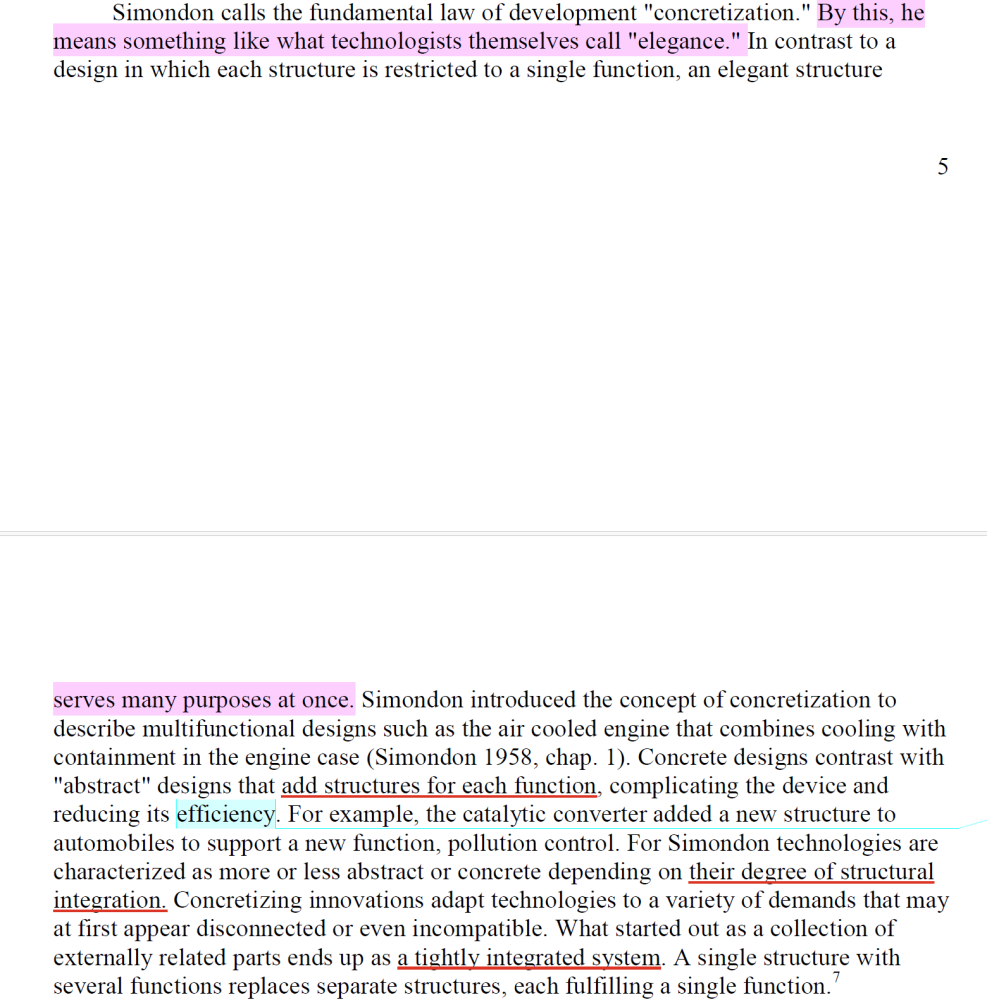
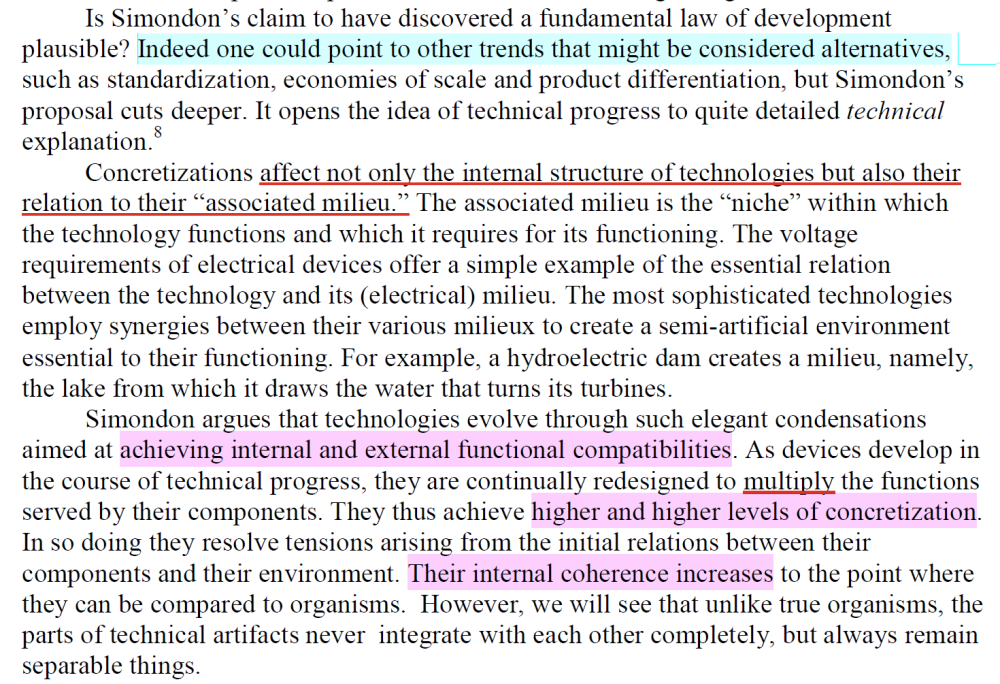
.thumb.png.a74c1b0fc6690c9c133b7cdaadda9a12.png)
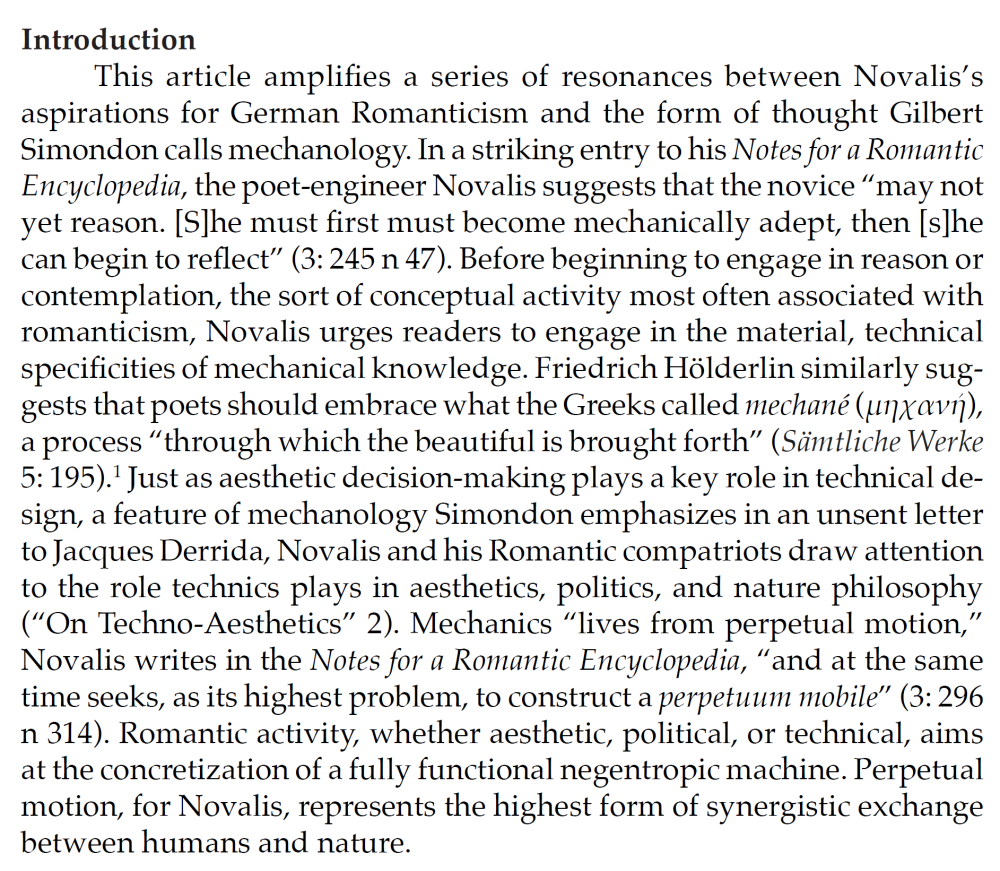

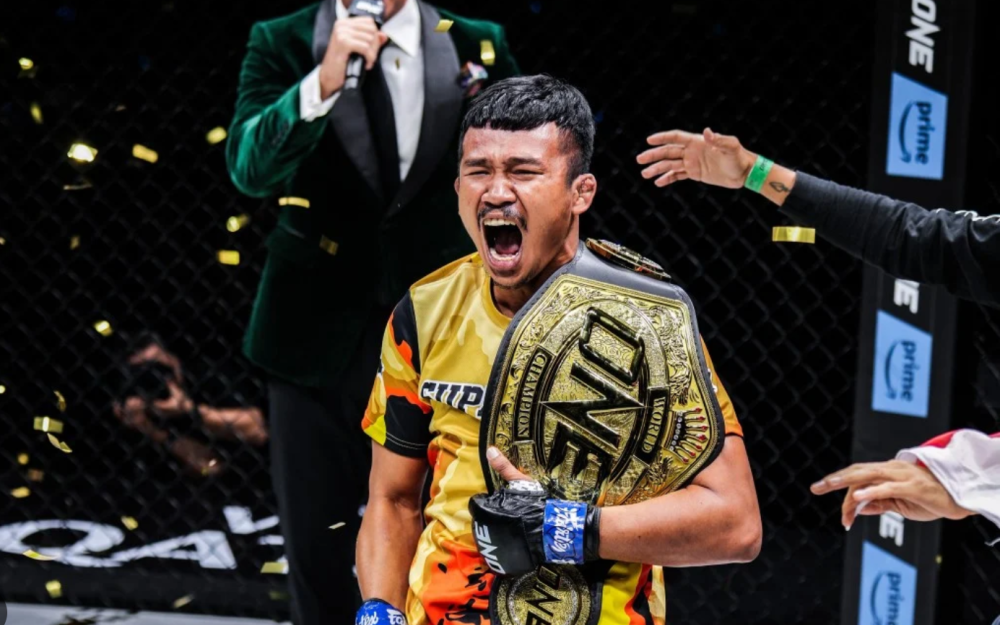
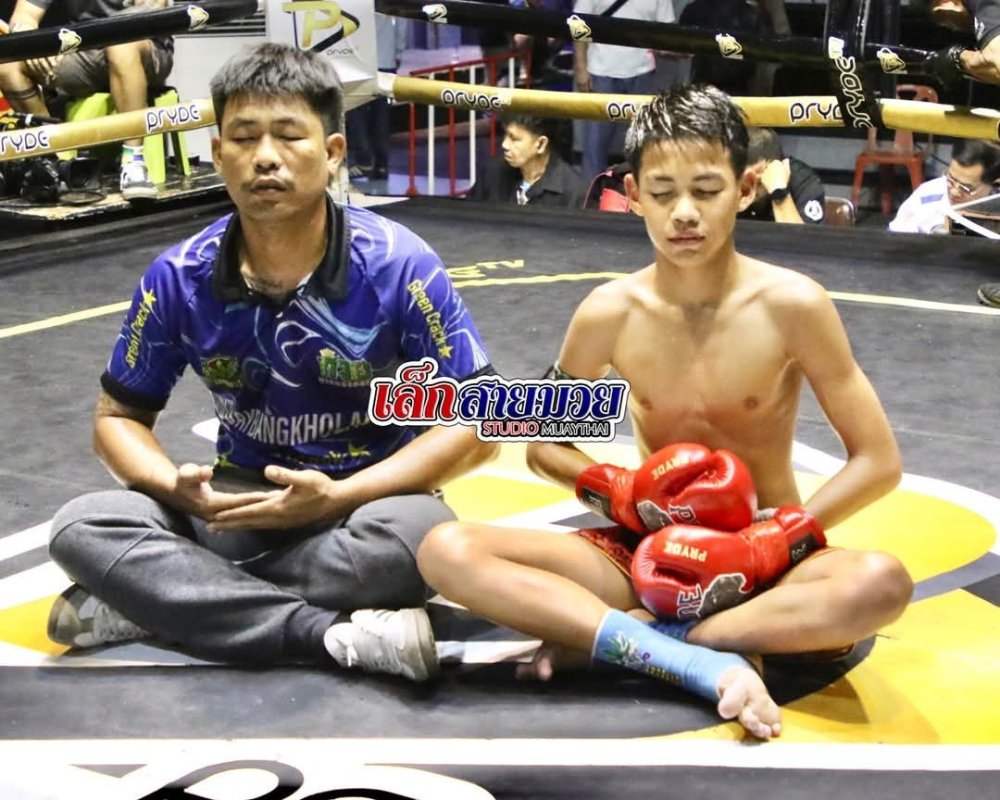
.thumb.png.5f06d27e0aa911e17d9e746c91a86aec.png)
.thumb.png.d5943433772f13869fbd7a45b2531809.png)
